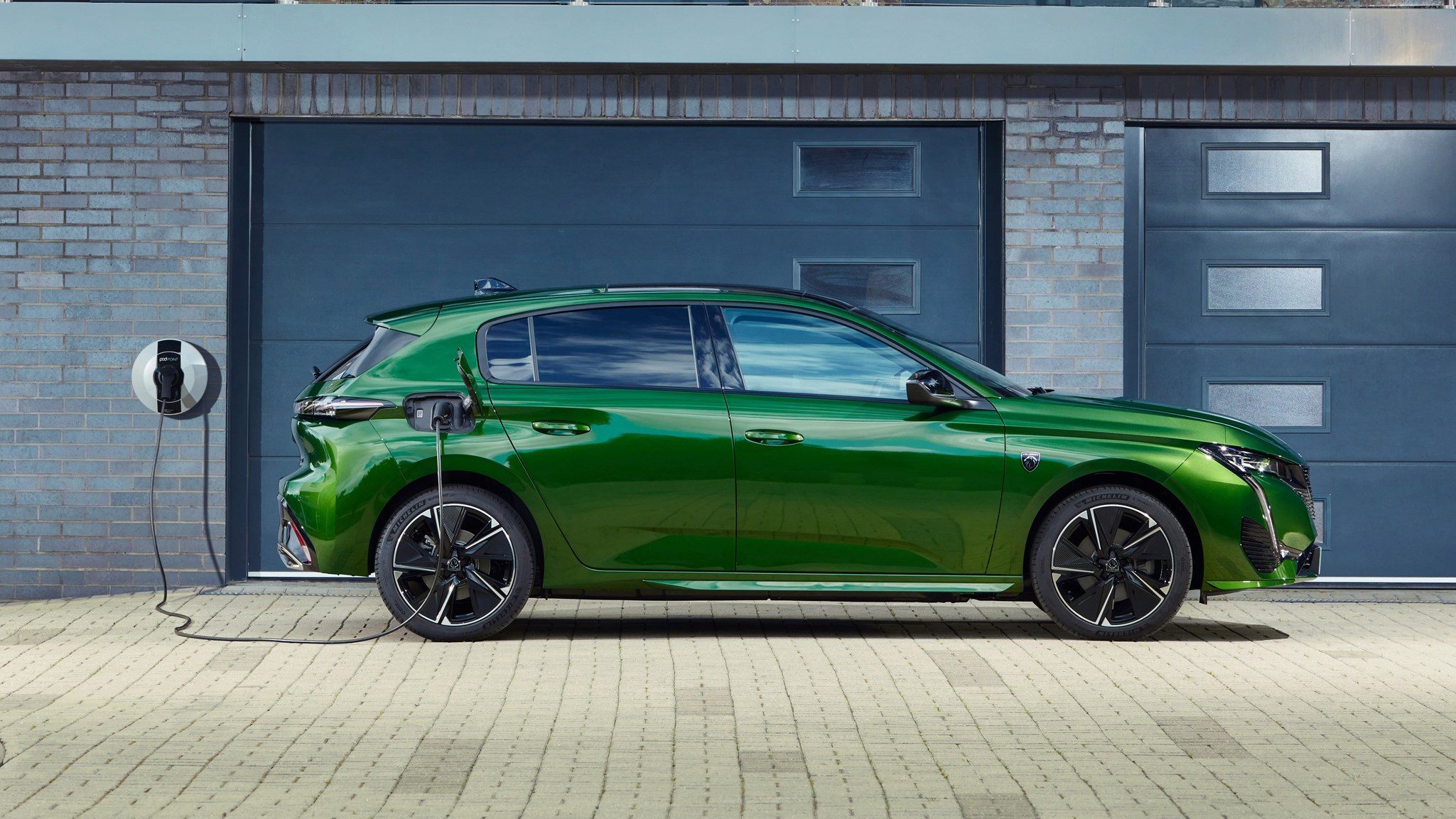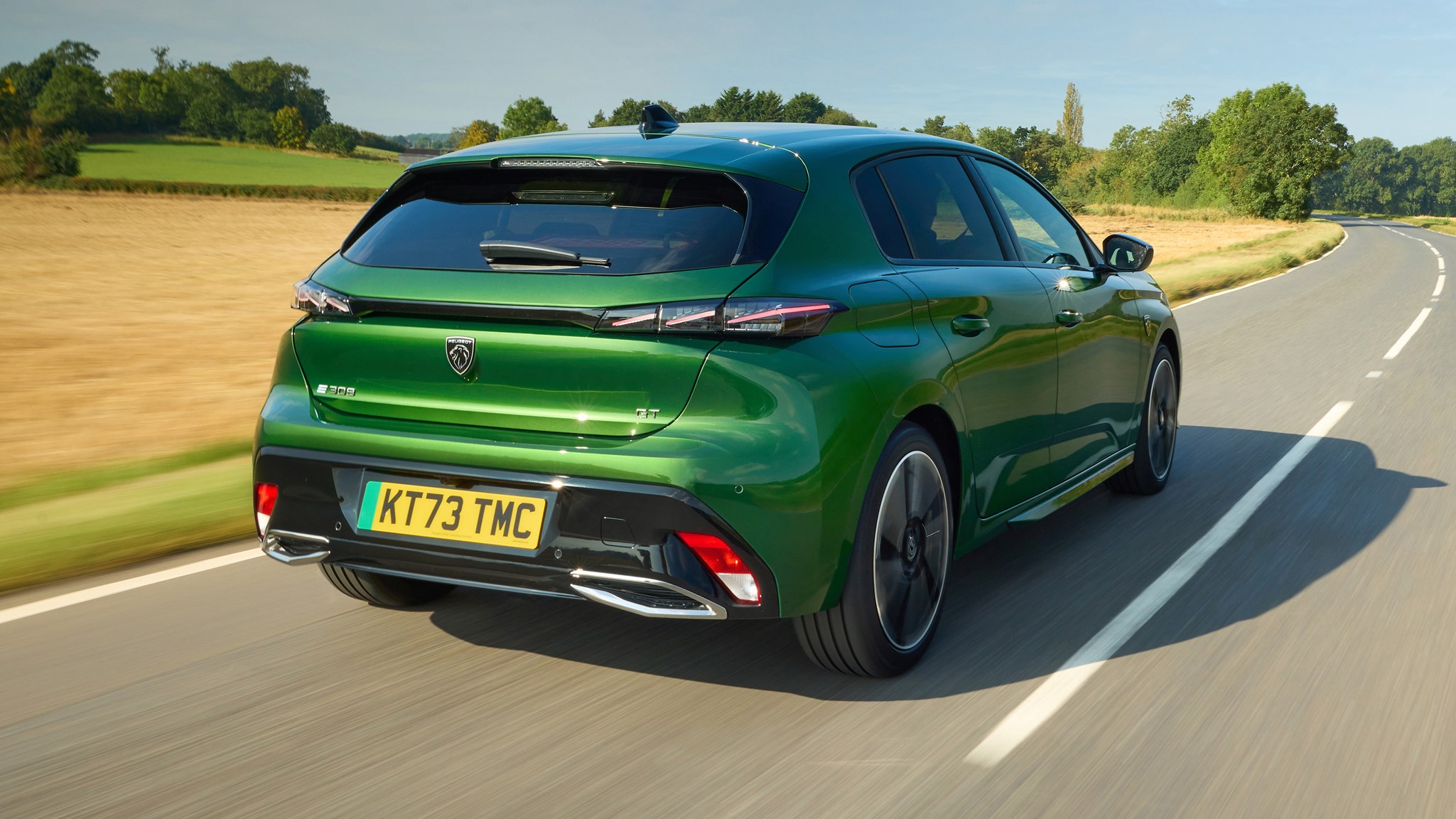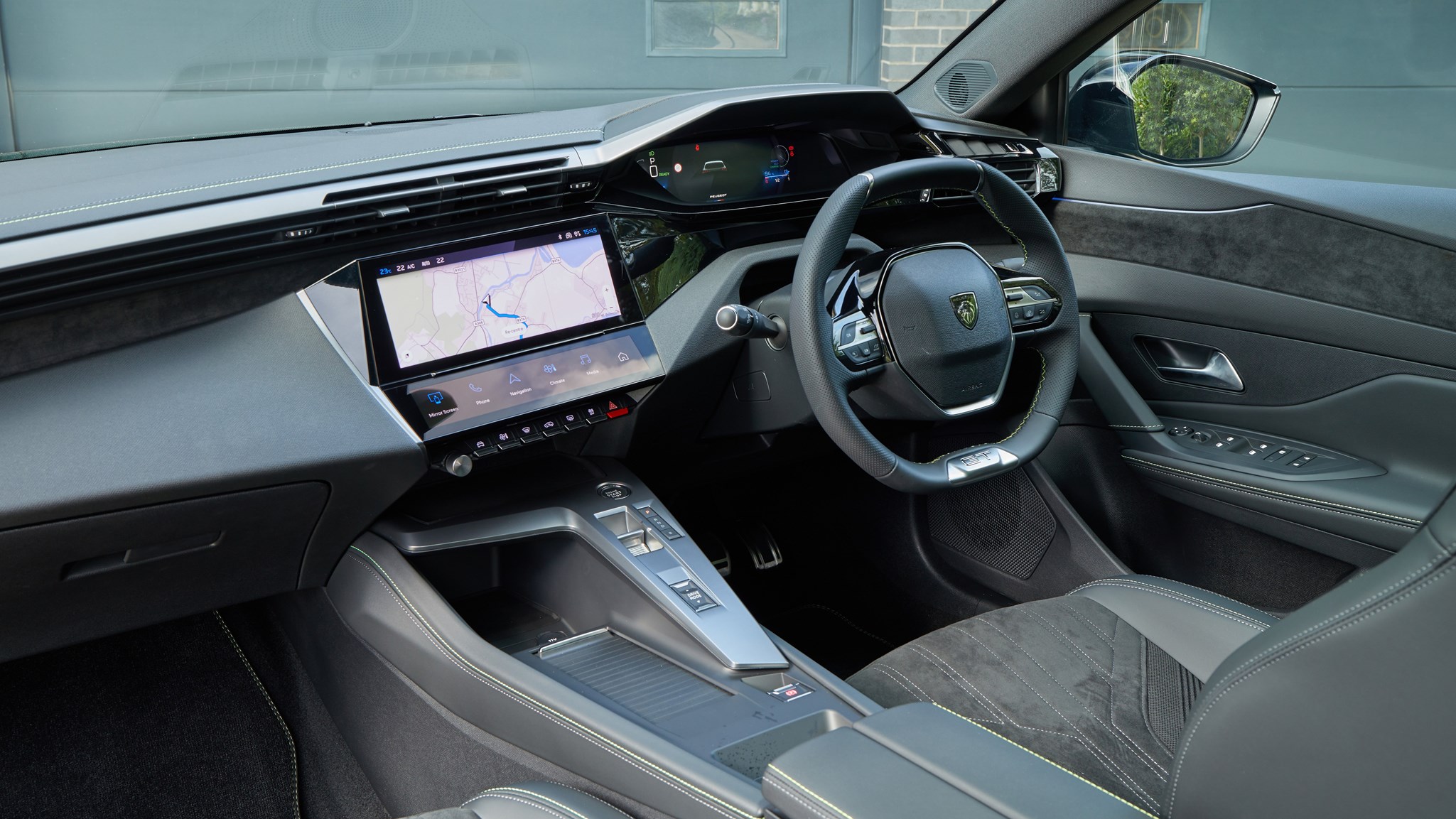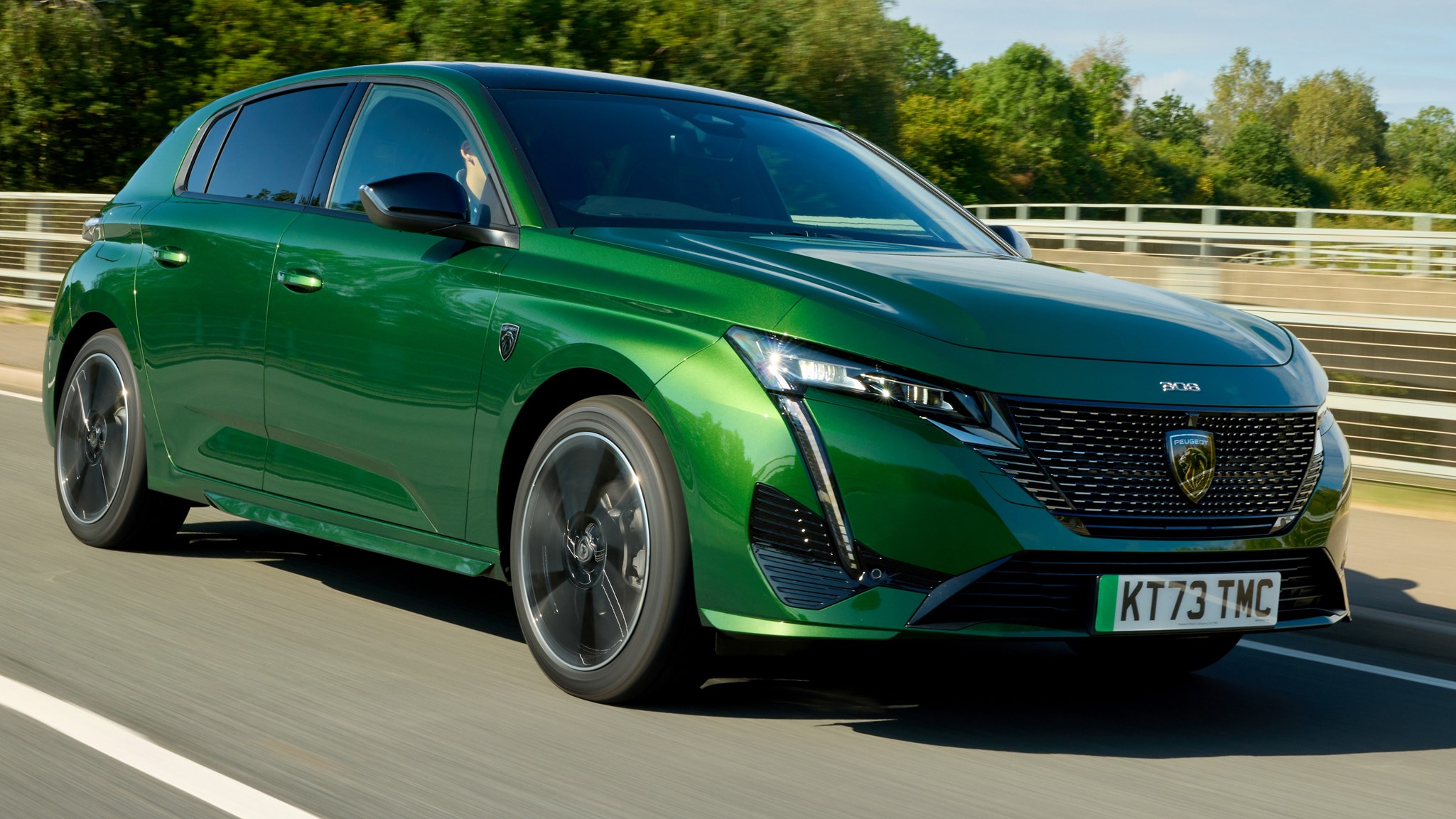► 257 miles of range, 52kWh battery
► Excellent efficiency
► Estate on the way
There are two trains of thought when it comes to building electric cars. The first is to construct a bespoke EV architecture to make the most of the packaging freedoms provided by batteries and electric motors. Alternatively, you can try to shoehorn internal combustion, plug-in hybrid and electric drive into one platform, bringing us neatly on to the Peugeot E-308.
It’s the sister car to the Vauxhall Astra Electric, and is also available in hatchback and estate bodystyles. Naturally the E-308 gets the same 52kWh battery and 154bhp electric motor that drives the front wheels, in this instance up to 257 miles according to official WLTP figures. It’s a big claim for a relatively small battery, with efficiency being key. You therefore get a standard heat pump to help in cold weather, something that’s optional on many rivals.
154bhp? That doesn’t sound like a lot
Where once that was hot hatchback power, it’s never going to make nearly 1700kg of electric car particularly sprightly. In fact, with 0-62mph taking a yawning 9.8 seconds, it’s over half a second slower than the Vauxhall Astra Electric covering the same sprint. There’s enough low speed punch to make town driving painless, but those used to electric cars pinging them up to motorway speeds briskly will be disappointed.

Even with Sport mode engaged, A road overtakes require a bit of planning and it never feels like there’s much danger of the front wheels spinning. A short motorway slip road will also leave you sweating, although there’s enough pace for most situations. However, the 200bhp+ Volkswagen ID.3 and MG4 are far punchier.
The upshot of this is excellent efficiency, with a mixed road route taking in some urban streets, country roads and dual carriageway saw consumption of just over four miles per kWh. The E-308 is capable of being rapid charged at up to 100kW, giving a 20-80% charge time of 30 minutes.
How does it drive?
The good news is that the E-308 is a far softer riding thing than the overly firm Astra Electric. It takes the sting out of urban potholes yet still has decent body control should you hit a dip or crest in the road at speed. Given the leisurely performance, the comfort it offers makes more sense than an attempt to make it feel ‘sporty’.

That said, the steering is certainly on the quick side. Like other modern Peugeots it gets a tiny octagonal steering wheel attached to a quick rack. There’s a lot of weight and a sluggish response just off the straight ahead but it doesn’t take a lot of spinning to get from lock to lock. A quarter of a turn in more than enough for most situations.
There’s a bit of body roll but decent grip and a safe, if uninvolving balance. An ID.3 is more satisfying to drive down a country road quickly, while the MG4 can be genuinely good fun. You’re better to drive sensibly and conserve energy in the E-308, enjoying the comfort, quiet and interior.
Good point, what’s the E-308 like inside?
Where the Astra Electric is solid and easy to use but a bit drab, the E-308 trades some ease of use for techy style. You’ll find fewer buttons and switches, with heater controls solely found in the 10.0-inch infotainment system, and instead what Peugeot calls i-toggles. These are large configurable icons that sit on a screen below the infotainment, with a few physical shortcut buttons below this.

They help you get around the menus a bit easier, and the system is responsive and looks sharp. Some of the icons could be bigger, but on balance it’s better than what you get in ID.3 and MG4. Quality is a cut above the Astra, with more soft-touch plastics and rich-feeling materials giving an upmarket ambiance.
Space up front is good, but the rear seats aren’t as spacious as you’ll find in an ID.3 or the far cheaper BYD Dolphin. Boot space is identical to plug-in hybrid versions of the regular 308 at 361-litres, a reasonable but not outstanding amount.
If you want more detail on the interior, infotainment and space, have a look at our main Peugeot 308 review.

Peugeot E-308 review: verdict
The E-308 certainly corrects some of what was wrong with the Astra Electric, but unfortunately it creates different problems for itself. We can appreciate the focus on ride comfort given the gentle acceleration on offer and the interior is plusher, but it’s not as easy to use inside and the Astra steers more naturally.
Besides, an MG4 is quicker, drives better than both and costs an awful lot less despite having more range. Like the Astra, price is the biggest issue. No version of the E-308 costs less than £40k and top-spec GT models with a few options are more than an entry-level Tesla Model 3. That makes the E-308 a tough sell.